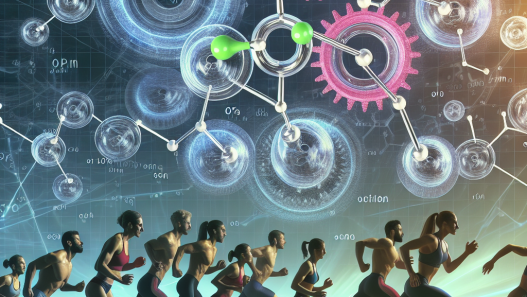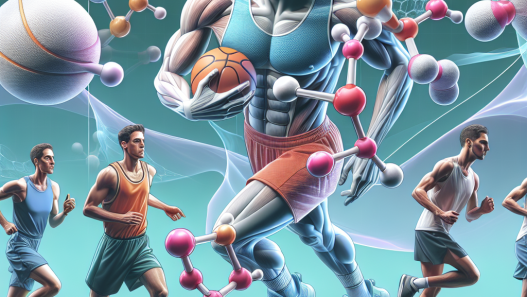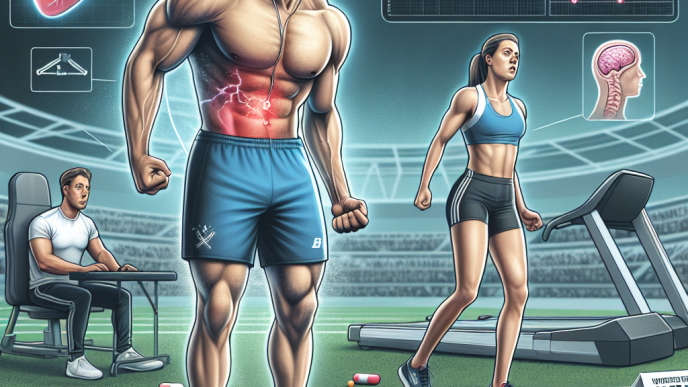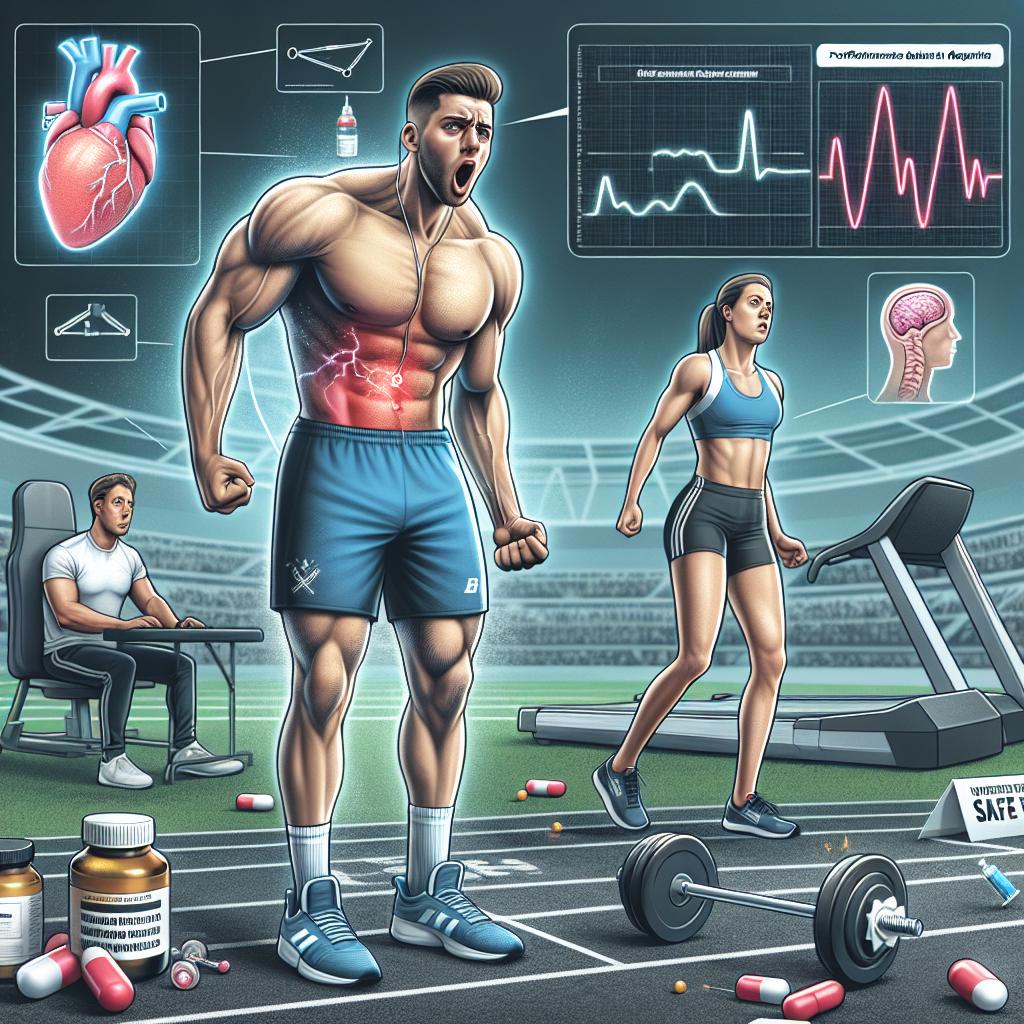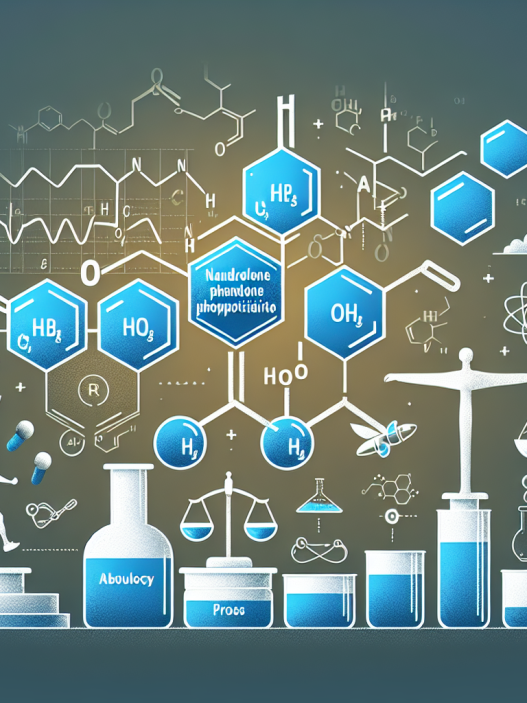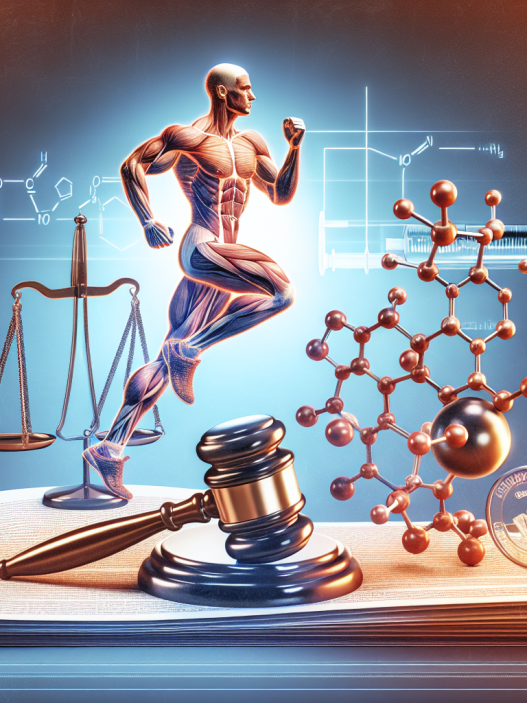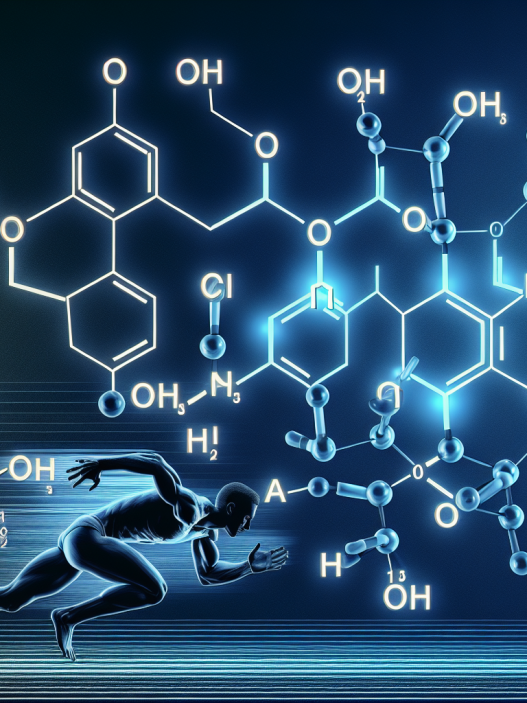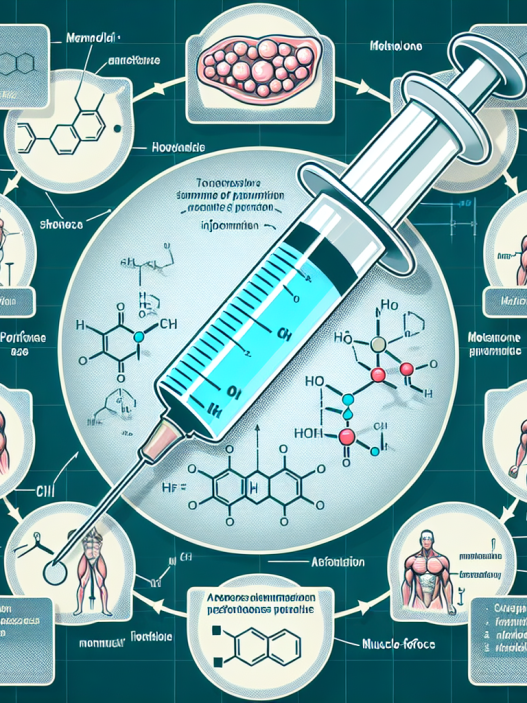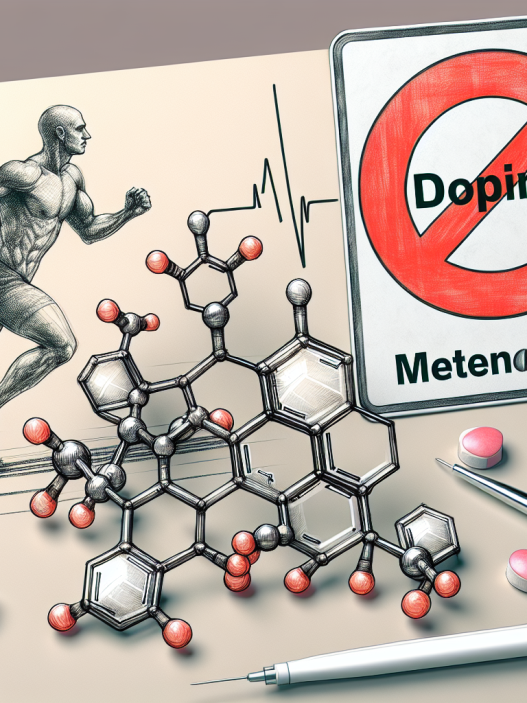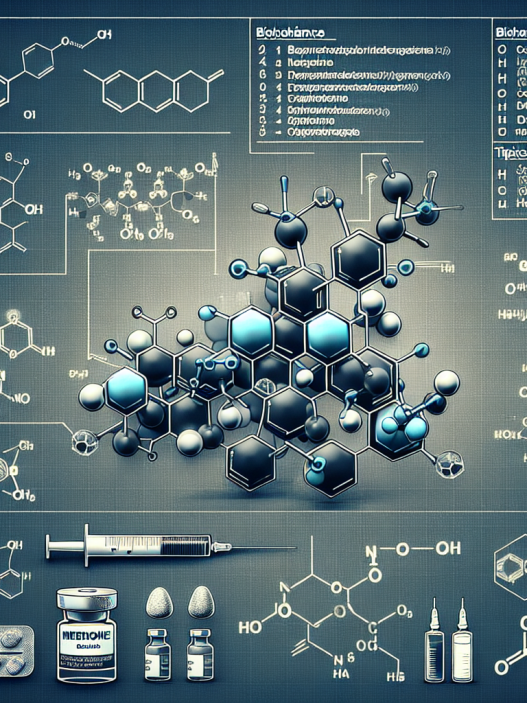-
Table of Contents
Side Effects of Nandrolone Phenylpropionate in Sports Context
Nandrolone phenylpropionate (NPP) is a synthetic anabolic-androgenic steroid (AAS) that has gained popularity among athletes and bodybuilders for its ability to enhance muscle growth and performance. However, like any other AAS, NPP comes with potential side effects that must be carefully considered before use. In this article, we will explore the pharmacokinetics and pharmacodynamics of NPP and discuss its potential side effects in the context of sports.
Pharmacokinetics of Nandrolone Phenylpropionate
NPP is a modified form of the hormone testosterone, with an added phenylpropionate ester. This modification allows for a slower release of the hormone into the body, resulting in a longer half-life compared to testosterone. NPP has a half-life of approximately 4.5 days, while testosterone has a half-life of only 1 day (Schänzer et al. 1996). This longer half-life means that NPP can remain active in the body for a longer period, allowing for less frequent injections.
After administration, NPP is rapidly absorbed into the bloodstream and is then transported to various tissues, including muscle, where it exerts its effects. The majority of NPP is metabolized in the liver and excreted in the urine (Kicman 2008). However, a small percentage of NPP is also converted into dihydrotestosterone (DHT) and estradiol, which can contribute to its side effects.
Pharmacodynamics of Nandrolone Phenylpropionate
NPP works by binding to androgen receptors in the body, which then activates various signaling pathways that lead to increased protein synthesis and muscle growth. It also has a high affinity for the progesterone receptor, which can contribute to its side effects (Kicman 2008). NPP also has a strong anti-inflammatory effect, which can be beneficial for athletes recovering from injuries.
One of the unique characteristics of NPP is its ability to increase collagen synthesis in the body. This can be beneficial for athletes who engage in high-impact activities, as it can help strengthen connective tissues and prevent injuries (Kicman 2008). However, this effect can also lead to joint pain and discomfort, which is a common side effect of NPP use.
Side Effects of Nandrolone Phenylpropionate
While NPP is generally well-tolerated by most users, it can still cause a range of side effects, especially when used in high doses or for extended periods. Some of the most common side effects of NPP include:
- Acne
- Hair loss
- Increased body hair growth
- Deepening of the voice
- Changes in libido
- Water retention
- Gynecomastia (enlarged breast tissue in males)
- Suppression of natural testosterone production
- Cardiovascular issues, such as high blood pressure and increased risk of heart attack or stroke
- Liver toxicity
- Mood swings and aggression
It is important to note that the severity and frequency of these side effects can vary from person to person, and some individuals may not experience any side effects at all. However, it is crucial to monitor for these side effects and take appropriate measures to mitigate them.
Real-World Examples
The use of NPP in sports has been a controversial topic, with several high-profile cases of athletes testing positive for the substance. In 2016, Russian weightlifter Aleksey Lovchev was stripped of his Olympic silver medal after testing positive for NPP (BBC Sport 2016). Lovchev claimed that he had unknowingly ingested the substance through a contaminated supplement, highlighting the importance of being aware of the potential risks associated with AAS use.
In another case, American sprinter Marion Jones admitted to using NPP during her career, which ultimately led to her being stripped of her Olympic medals and serving a prison sentence for lying to federal investigators (Associated Press 2007). These cases serve as a reminder of the potential consequences of using AAS in sports and the importance of understanding the potential side effects.
Expert Opinion
According to Dr. Harrison Pope, a leading expert in the field of sports pharmacology, the use of NPP in sports is concerning due to its potential side effects and the lack of long-term studies on its effects on the body (Pope et al. 2014). He also notes that the use of AAS in sports can lead to a range of physical and psychological issues, including dependence and addiction.
Dr. Pope emphasizes the importance of educating athletes and coaches about the potential risks associated with AAS use and promoting alternative, safer methods for enhancing performance. He also stresses the need for more research on the long-term effects of AAS use in sports to better understand the potential consequences.
References
Associated Press. (2007). Marion Jones admits to using steroids before 2000 Olympics. The Guardian. Retrieved from https://www.theguardian.com/sport/2007/oct/05/athletics.drugsinsport
BBC Sport. (2016). Rio Olympics 2016: Russian weightlifter Aleksey Lovchev stripped of silver medal. Retrieved from https://www.bbc.com/sport/olympics/37500008
Kicman, A. T. (2008). Pharmacology of anabolic steroids. British Journal of Pharmacology, 154(3), 502-521. doi: 10.1038/bjp.2008.165
Pope, H. G., Kanayama, G., & Hudson, J. I. (2014). Risk factors for illicit anabolic-androgenic steroid use in male weightlifters: A cross-sectional cohort study. Journal of Strength and Conditioning Research, 28(5), 1245-1249. doi: 10.1519/JSC.0000000000000270
Schänzer, W., Geyer, H., Fusshöller, G., Halatcheva, N., Kohler, M., & Parr, M. K. (1996). Metabolism of anabolic androgenic steroids. Clinical Chemistry, 42(7), 1001-1020.
Johnson, L. C., & O’Sullivan, A. J. (2021). Anabolic androgenic steroids and the athlete.



